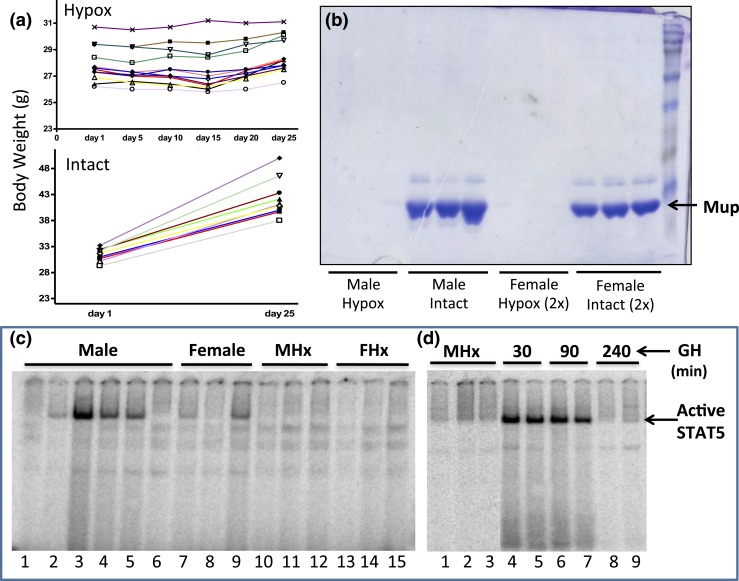Figure 1.
Hypophysectomy abolishes GH-induced liver STAT5 activity. (a) Mice were hypophysectomized (Hypox) and body weights were recorded for ∼25 days after surgery. Body weight gain of pituitary-intact mice (Intact) is shown as a control. The cessation of weight gain is indicative of complete hypophysectomy. (b) Urine collected from individual mice (1 μL for males, 2 μL for females) was analyzed on an sodium dodecyl sulfate–polyacryamide gel stained with Coomassie blue. Major urinary proteins (Mup) were undetectable in the urine of hypophysectomized mice. (C and D) EMSA analysis of whole-liver extract prepared from individual mice using a STAT5 EMSA probe. STAT5 DNA-binding activity (arrow) varies markedly in individual livers, most notably in males [c, lanes 1 to 6; see text and Fig. 4(a)], and is abolished by hypophysectomy of males (MHx) or females (FHx) and restored by a single pulse of GH (d, lanes 4 to 7 vs lanes 1 to 3). A decline in STAT5 activity back to baseline is seen 240 minutes after GH injection (D, lanes 8-9).

